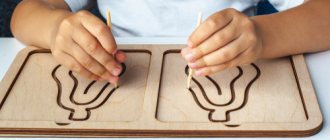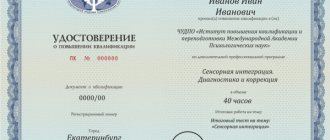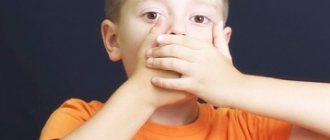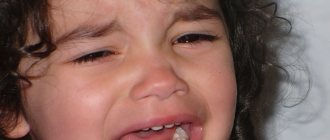Article:
Autism is one of the most difficult diagnoses to diagnose and is often confused with other diseases.
Thus, autism spectrum disorders are often perceived as alalia. This is explained by the fact that an autistic child may initially suspect deafness or blindness, because reactions to calls to him are quite weak or completely absent. However, if something interests the child, you can observe pronounced emotional reactions that quickly dispel doubts. Therefore, despite the difficulty of recognizing disorders, it is possible to do this.
What is alalia, and what are the classifications of the disease?
Alalia is a slow development of speech, or its complete absence, with intact hearing. Alalia and autism are similar in that they have difficulty perceiving speech that is not caused by a malfunction of the hearing aid.
However, unlike autism, the child is more willing to make contact and can be involved in games that do not require constant communication.
There are sensory, motor and sensorimotor alalia. Sensory is the inability to attach proper emotional color to words.
At the same time, the meaning of the word and its pronunciation diverge. Sensory alalia may be suspected when:
- the child unconsciously repeats words after someone;
- stammers and changes letters in words;
- words are pronounced impulsively, sometimes merging into one;
- lack of understanding of a word with its objective meaning.
Autism and sensory alalia may be similar to the child’s somewhat withdrawn, depressed state. They do not understand the speech of the environment, which is the reason for the difficulty in pronouncing sentences with expression.
Motor alalia and autism may be similar attention and performance disorders. With alalia, these manifestations are also accompanied by impaired intellectual development. It appears with lesions of the cortical end of the speech motor analyzer, as well as the conduction pathways. Plus, a decrease in the activity of these zones can also lead to motor alalia.
Sensorimotor alalia and autism may be confused due to the aforementioned symptoms, such as some withdrawal from interactions with others and distraction. However, alalia and autism still have differences. Moreover, timely making the correct diagnosis can be a decisive moment in the treatment of a child.
How does autism manifest?
The disease manifests itself in the appearance of characteristic symptoms that can be detected already in the second year of the baby’s life.
Isolation from others
Parents may suspect a mild disorder of the nervous system if the child does not respond to an adult’s speech, always looks away, and does not look at the person who is addressing him. The child may laugh for no apparent reason or, conversely, will not even smile at any attempt by an adult to make him laugh.
Tries to communicate only with gestures, and does this only if there is a need to indicate to an adult his desires or needs.
He is not at all interested in communicating with his peers, and he is also unable to find contact with other kids, so he prefers to spend time alone. Such a child loves to play alone, and if another child tries to join him, he will most likely throw a tantrum or be capricious.
An additional difference between an autistic child is the lack of ability to play any role-playing games. He cannot come up with a plot for the game, and he perceives any toy completely differently, for weeks healthy children. For example, a child may be interested only in a specific part of a toy; he may spend hours looking at a wheel from a car and will not even think that this item can be used in another way, for example, rolled on the floor.
Even though a child with autism is unable to express emotions, he will still become anxious if his mother is out of sight.
Communication breakdown
Absolute absence of speech or delay in full development of speech are disorders that often occur in the youngest patients. The development of speech skills in such children depends on the severity of the disease. If a severe form of the pathology has been advanced, then the child may not begin to talk at all in the future. In some cases, patients learn to express their wishes and requests in short words. More often, speech is still present in such patients, but incoherent sentences are more like just a collection of random words.
Autistic children often have no reaction when called by name. They always talk about themselves in the third person. Their speech often does not make sense, and when asked a question, they can answer something that has nothing to do with you in the conversation.
Stereotypical behavior
This type of behavior includes:
- Daily rituals. Autistic children love to be in a familiar and comfortable environment. If any changes occur in their usual way of life, for example, rearranging furniture or moving, then they experience discomfort and anxiety. This can make a child withdraw into himself or cause him to become aggressive.
- Obsession, which manifests itself in concentrating on one activity. It is sometimes difficult to distract a child with autism from an activity to which he is willing to devote several hours.
- Intense fear. If a child often experiences stress, he may develop aggression not only towards others, but also towards himself.
- Repeated repetition of certain movements. If an autistic child finds himself in an unfamiliar environment or experiences stress, he begins to repeat the same movement over and over: swaying from side to side, fiddling with his fingers, or shaking his head.
Early symptoms of the disease
Parents may notice telltale signs of early autism in their child before he or she turns one. Children with this nervous system disease are inactive and show little or no interest in toys. Against the background of normal physical development, such children do not show a desire to learn new subjects.
How is alalia different from autism? Diagnosis criteria
The differences between these diseases will help determine whether a child has alalia or autism. So, the criteria for determining diseases are described below.
| How to distinguish alalia from autism : main signs | ||
| Criterion | Alalia | Autism |
| Need for communication | The child comes into contact with adults and prefers joint activities. | There is no desire to communicate. In classic autism (Kanner syndrome), the child prefers to look at objects, leaf through books, etc. |
| Pointing gestures | Learns independently. | Have to vaccinate. |
| Speech development in alalia and autism before those years | Focus on dialogue. Reaction to speech addressed to a child. | Aimlessness of speech. Conversations only on topics that interest the child. |
| Sound pronunciation side of speech | Safety is normal. | Severe disturbance of tempo, tone and color of speech. |
| Expressive speech | There is a general underdevelopment of speech. But with constant work on this problem, its restoration is possible. | Lack of specific words like “I”, “mine”, etc. There is no addressing others by name. |
| Mental development | Possible mental retardation and instability of attention. | Possible mental retardation and impairment of cognitive processes (memory, logic, etc.). |
| Emotional-volitional processes | Hysterics are possible, which are easily extinguished and prevented. Slightly higher anxiety than peers. | People get hysterical easily and for minor reasons. They come out of such states on their own, after a complete outburst of emotions. |
Motor alalia and autism also differ in the presence of phobias and fears. Alaliks may have manifestations, but in a weak form, and in the presence of concomitant attention disorders or hyperactivity. Fears are not uncommon for autistic people. Moreover, they are rarely substantive and do not carry objective reasons.
The differences are also noticeable when playing and practicing. Thus, the autistic person will take on roles in the game, but at the same time will be determined to act independently. Alalik will prefer to play in company. Plus, he will not be against classes with a speech therapist, parents or psychologist, while an autistic person will find it difficult to make contact.
Impaired motor skills and coordination can be seen in both autistic children and children with alalia. However, for the latter, this problem is easier to correct. Obsessive movements (stereotypes) are more typical for autistic people.
Speech disorders
First of all, parents notice in their children signs of sensorimotor alalia associated with speech. This:
- misunderstanding of spoken speech, in severe forms - inability to distinguish between speech and other sounds;
- difficulty pronouncing sounds and syllables;
- illiterate construction of phrases, up to the absence of phrasal speech or gross errors;
- speech is usually at the level of babble and interjections; if there are words, then these are nouns or only their roots;
- the child can spontaneously repeat individual words several times or for a long time (echolalia), but cannot reproduce them at the request of an adult;
- The child, trying to communicate, uses mainly facial expressions and gestures.
Such violations lead to difficulties in communicating with other children in kindergarten, development groups, and on playgrounds. There are also difficulties in communicating with adults: they do not understand the child. The level of intelligence, initially normal in most cases, begins to decline without pedagogical and medical assistance.
Examination of alaliks and forecasts for improvement of condition
Autism and alalia are determined according to IOM and preschool education. These are individual routes for accompanying the child, the conclusions of which will be taken into account when making a diagnosis. They reflect the observations of a psychologist, teachers and speech therapists regarding the child’s condition.
Precisely because motor alalia and autism have differences, the prognosis for the restoration of the abilities of children in the first case is much more comforting. So, if you accompany your child and have regular sessions with a speech therapist and psychologist, you can significantly improve your child’s speech skills. Moreover, a primer for children with alalia and autism, which is used in remedial classes, can also help with this. It allows the child to perceive information more easily and better cope with the assigned tasks of learning writing and pronunciation. The establishment of a connection between an object and a word also improves.
But in general, if you take care of your child and believe in improving his condition, you can achieve positive results. This is evidenced by both comments from doctors and reviews from parents who have encountered this problem.
Diagnosis of autism
Until one year is too early to talk about whether a child has a disease such as autism. Outwardly, at such an early age it is quite difficult to determine this pathology, however, experienced parents who already have older children may notice certain developmental deviations already at this age. If there are cases of autism in the family, it is important to closely monitor the child so that if characteristic symptoms of the disease are detected, medical assistance is provided in a timely manner. If the diagnosis is made as early as possible, then in the future the baby’s adaptation to the world around him will be simpler and more consistent.
Autism is diagnosed using the following basic methods:
- EEG is a research method necessary to make a diagnosis such as epilepsy. Sometimes autism can be suspected based on the fact that the patient experiences epileptic seizures.
- Examination by an otolaryngologist who tests the patient's hearing and confirms or excludes possible hearing loss.
- Brain ultrasound is a diagnostic method that can be used to identify or exclude the presence of disorders in the structure of the brain, which may lead to the appearance of symptoms of the disease.
- Testing using special questionnaires.
Forecast
Autism is not as scary as it might initially seem, so parents should understand that if their child is diagnosed with this, he can grow up to be a full-fledged person, can successfully graduate from school and even start a family in the future. To do this, it is important to follow all the recommendations of specialists, create an atmosphere in the family favorable for the growth and development of the child, and provide proper care for him. It is also important to know the main symptoms of autism and carefully monitor the behavior of a child of primary preschool age in order to notice signs of such a nervous system disease in time and promptly seek help from a specialist.







